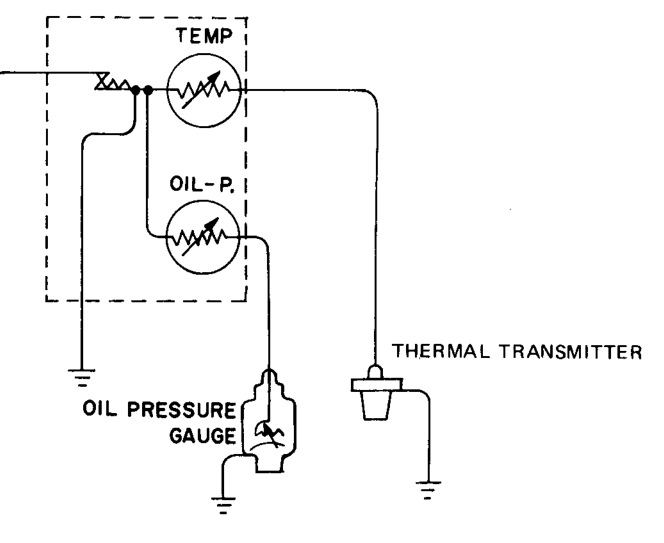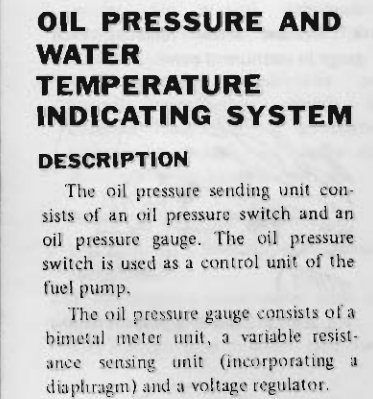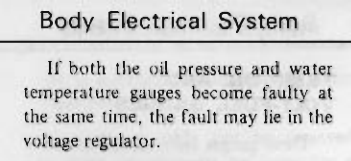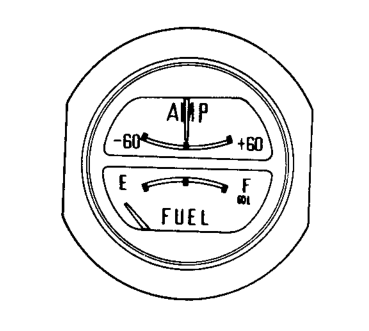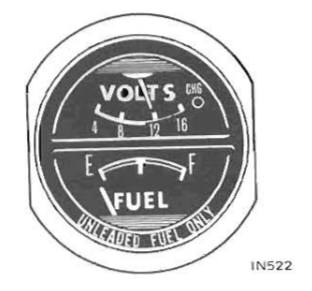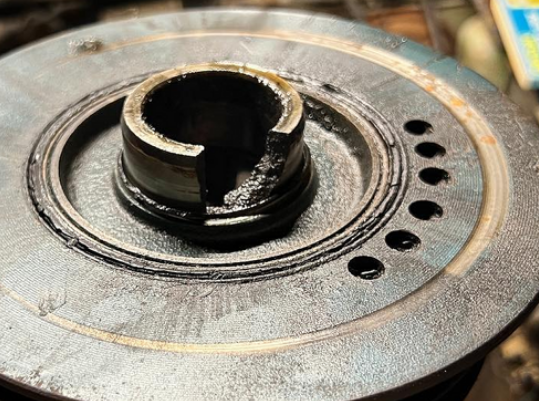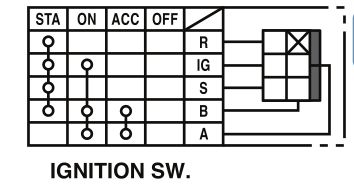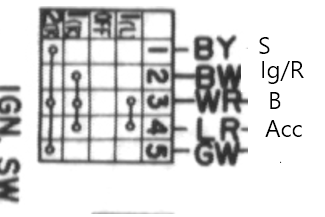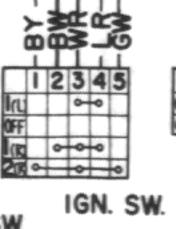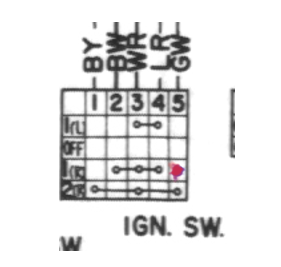Everything posted by Zed Head
-
How The Gauges Work
Pretty cool how they used to combine simple basic mechanical and physics concepts together to accomplish a goal. Today it's all converting lines on paper to lines on silicon. I came across this guys Youtube channel a while ago. Seems to be a traveling electronics engineer with free time. Here's one of his videos, he takes things apart and explains them. I am not claiming to understand what he's saying, but things can be learned.
-
Thermostat/Oil gauge
Since you're on a roll can you explain how the regulator failing affects both gauges at the same time. Maybe even explain what is happening and if a regulator failure matches the symptoms described. Nissan didn't mention a regulator for the temperature gauge but I assume that's what the three triangles indicate. A shared component.
-
Thermostat/Oil gauge
I don't know how the internal "voltage regulator" works but Nissan said if both gauges go bad at the same time that's probably the source of the problem.
-
280z starts but has a massive parasitic draw
The Youtube "short" only shows you starting the engine. Not much info in it. In your first post you were talking about volts but as I noted you should have an ammeter in your car, if it's a 1975. Are you sure it's not a 76? The build date can be in 75 for a 76 model. The voltmeter came in 1976. Do you have a hand held meter? Volts and resistance? If not you should get one. There are good options available for about $30. You need it if you're going to diagnose electrical problems. Here's an ammeter and a voltmeter. Not sure what you're working with.
-
280z starts but has a massive parasitic draw
That video didn't download. Most people create a Youtube channel and upload their videos to it. Makes them easier to view. Sounds like a nice project especially if it really only has 36,000 miles.
-
280z starts but has a massive parasitic draw
No need to go to Xenon when this forum has the same files. https://www.classiczcars.com/files/category/13-280z/ Seconding the bad VR possibility. It's probably not a "parasitic" draw. It's a normal draw, with no recharging. And, the ammeter should sit at zero when everything is off. It will go negative when the system is discharging and positive when it's charging. The EFI and ignition system will draw current while the engine is running. If you turn off the key and it sits on the negative side then you really do have a draw.
-
Harmonic Balancer Broken
I just read through that last thread again and it's pretty scary. Be ready to break a sweat just reading. The incredible expanding project...
-
Harmonic Balancer Broken
I found the thread I was thinking of. It's actually just a portion of a longer thread. The weirdness starts at post #24.
-
Harmonic Balancer Broken
Can't find it but this one is interesting -
-
Harmonic Balancer Broken
Things will get more clear when you get that used damper and test fit it. The woodruff keys are available. There is a recent thread on the forum from a guy who was having trouble getting the damper on without pushing the key out of its slot. Some good details in it, I'll see if can find it. I wonder if those seal parts that you found aren't from a previous seal. That's a 280ZX damper on a 260Z. Somebody's been in there before. Here's the part number for the woodruff key. #10. Search the part number and you'll get lots of hits. Your local auto parts store might even have it. http://www.carpartsmanual.com/datsun/Z-1969-1978/engine-240z-260z/piston-crankshaft
-
Harmonic Balancer Broken
The fracture surface looks oily. And not seeing how you get that "pointer" groove without some wobble. Could be that the damper rubber is gone. Who knows. We need to know.
-
Headlight switch problem- 1978 280z
- Harmonic Balancer Broken
More problems > more fun. Not kidding!- Harmonic Balancer Broken
It happens.- Harmonic Balancer Broken
Why is it so rusty on the inside surface, the eBay piece? Looks like it's been off and wet for quite a while. Where does the fracture start on the damaged damper? Is it at the keyway? How does the end of the crankshaft look? Better take a close look. That groove in your picture looks like the damper was cocked on the shaft so bad that it rubbed on something, like it was wobbling You might have bigger problems. (Sorry). That's a bummer. @Terrapin Z has many parts. Maybe he has a two row damper. Good luck.- Headlight switch problem- 1978 280z
My post about the relay was meant only about taking the load off of the power supply switch, which has the plastic nubbin melting problem, and the solder joint breaking problem (which the new brass piece won't fix. It will still get hot). I haven't seen any overheating problems described at the dimmer switch, which is where high and low are separated. Zs-ondabrains setup had relays on both ends, I thought. Might be worthwhile to go back and look at his work.- Duffy's 1/71 Series 1 240z build
- Duffy's 1/71 Series 1 240z build
Here's something funny though. This number is for a later model switch. Not a 240Z switch. So, G/W and B/W are already connected at Start (I assume, like the 280Z switch chart). Maybe just getting a 280Z switch will solve the problem. Time to plug it in and see what happens. https://www.rockauto.com/en/partsearch/?partnum=48750-e7705 https://www.classiczcars.com/forums/topic/58568-duffys-171-series-1-240z-build/?page=36#comment-644653- Duffy's 1/71 Series 1 240z build
Well, overall, I think the good news is that the problem has been defined and several solutions have been offered. The reason for the power loss seems clear and it should definitely be possible to remove that problem. I'd just try SteveJ's solution at the ballast resistor first. It's simple and it will most likely work, proving the circuit, then you can decide if you want to go farther. I learned something about the Nissan ignition switch illustrations. I need to go out and see how they do them today.- Duffy's 1/71 Series 1 240z build
Earlier I said that the Accessory pin would be powered if you did that. I think that I misunderstood how the switch works on the inside. The diagram is misleading. It looks like a circuit illustration but really it just shows what's connected to Battery at any position of the switch. Sorry about the confusion. If column #4 was connected to column #2 you would not be able to use Accessory alone, without having power to the the Ignition circuit. Therefore they must not be connected. Is there an effort here to keep the original wires intact? Seems odd to have powered wires run all the way in to the engine bay that don't actually serve their original purpose. I think that you could connect the pins on the back of the switch and achieve the same result as connecting them in the engine bay. A simple back probed jumper at the connection.- Duffy's 1/71 Series 1 240z build
Here is a 1976 280Z. 240Z next to it. Ig and R ((R)esistor/ballast) both get power on a 280Z switch. I'd test that switch's Ig and R pins and see what kind of switch you have. See if Ig and R both have continuity at Start. I thought this was a simple problem but it's really not. Maybe that's why they changed the switch, and the wiring.- Duffy's 1/71 Series 1 240z build
I picked the S circuit just because it was the first thing that came to mind. Wrong, pretty sure, the stuff below. Corrected farther down the page. If you connect GW and BW then you'll be backfeeding the Acc circuit during Start. #4. IF it's a 240Z switch. Check out the 1976 280Z switch in the next post.- Duffy's 1/71 Series 1 240z build
I think that you're back to the original point of your quest. You have a new switch now and you know how it functions. "Best" is very subjective. I think that the "key" point here is that you have the possibility of continuous power from the ignition switch from On to Start and back to On.- Duffy's 1/71 Series 1 240z build
That seems to answer the "bump" question, that would be the bridging point inside the switch. Seems like you could run a wire from the Start circuit to the ECU power supply and it would work. Probably need a diode so that you don't backfeed the Starter circuit through the On position. Similar to the 240Z alternator swap problem. You could also just add a separate power circuit for the ECU, with a switch or button. Might be good theft protection also. Or does this go all the way back to the original power supply wire problem? The overloaded wire. SteveJ's solutions. Anyway, there are several solution possibilities. Relays are your friend when you're adding new loads.- Duffy's 1/71 Series 1 240z build
- Harmonic Balancer Broken
Important Information
By using this site, you agree to our Privacy Policy and Guidelines. We have placed cookies on your device to help make this website better. You can adjust your cookie settings, otherwise we'll assume you're okay to continue.




